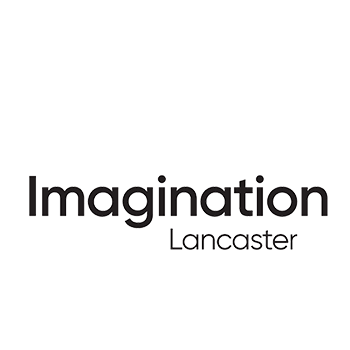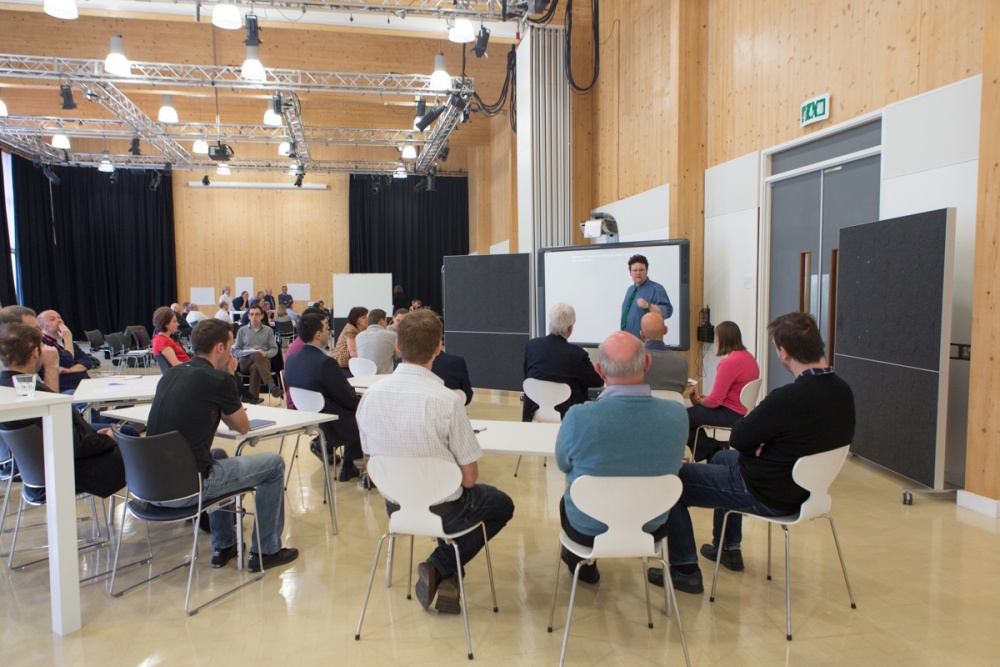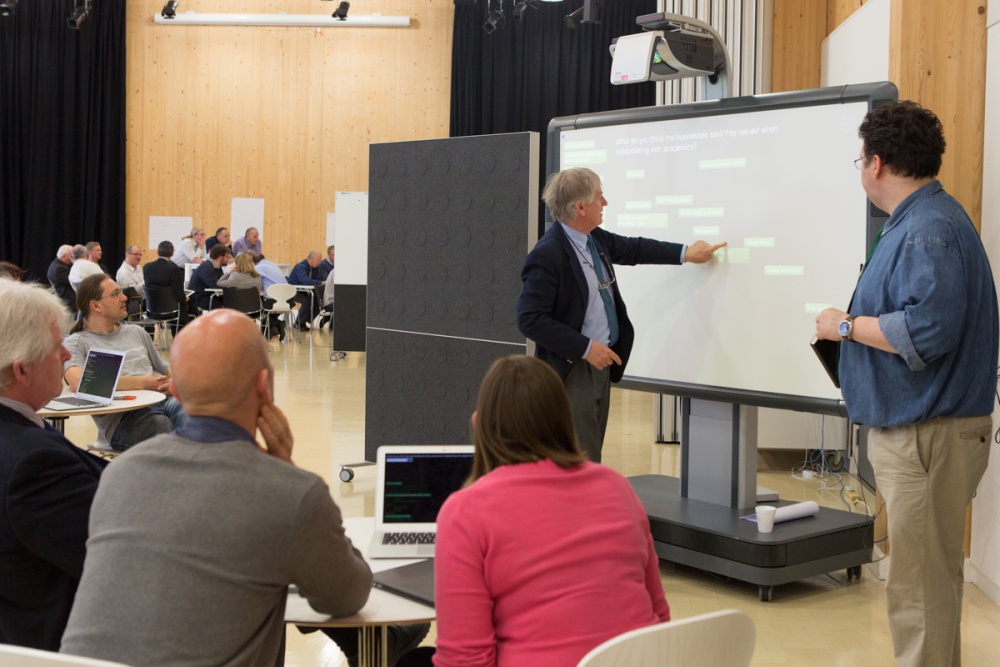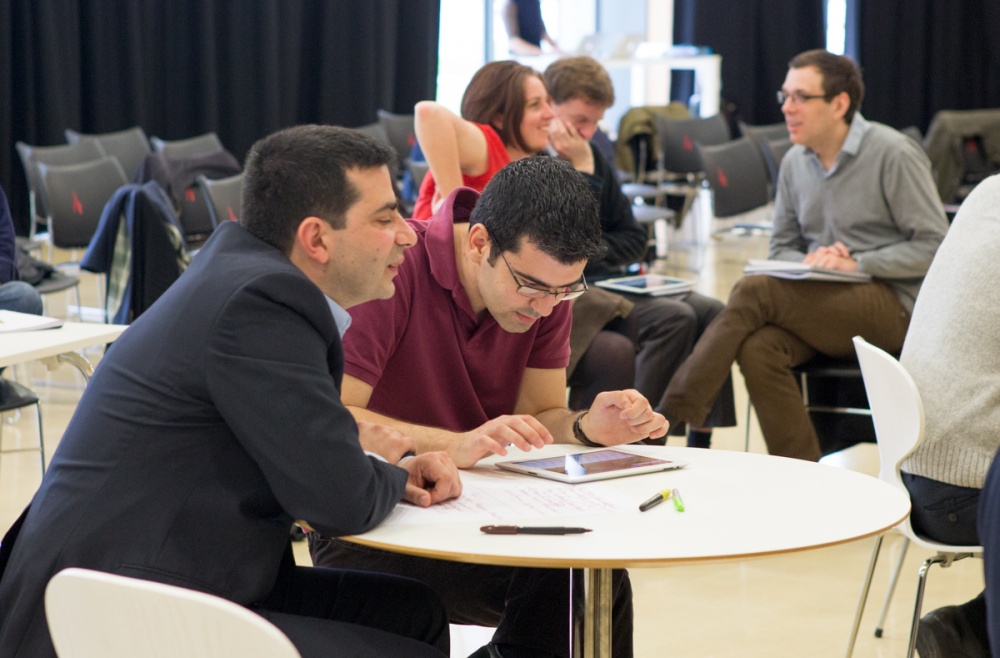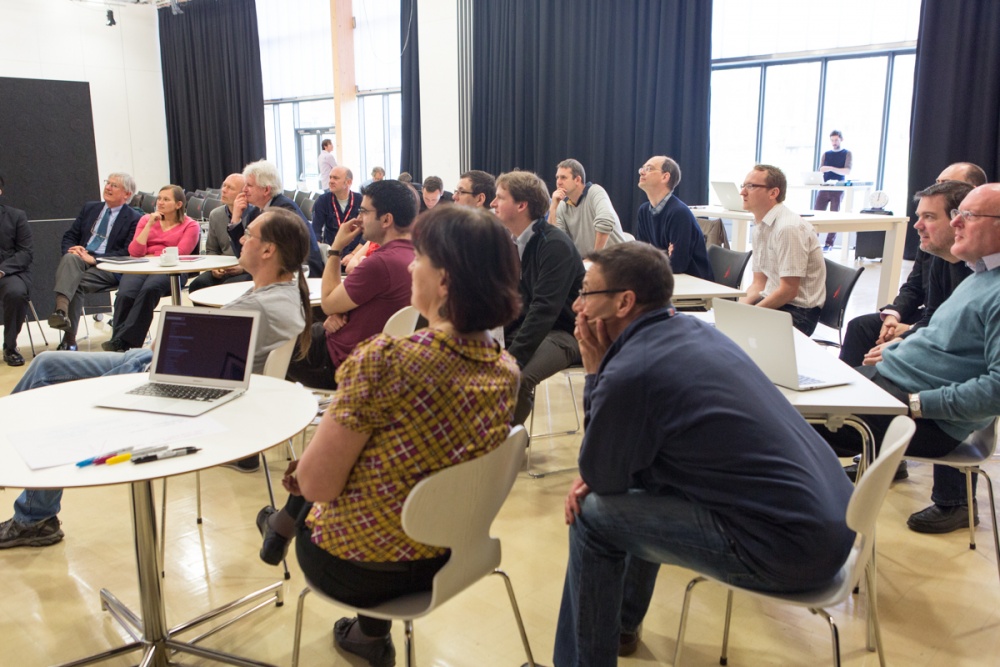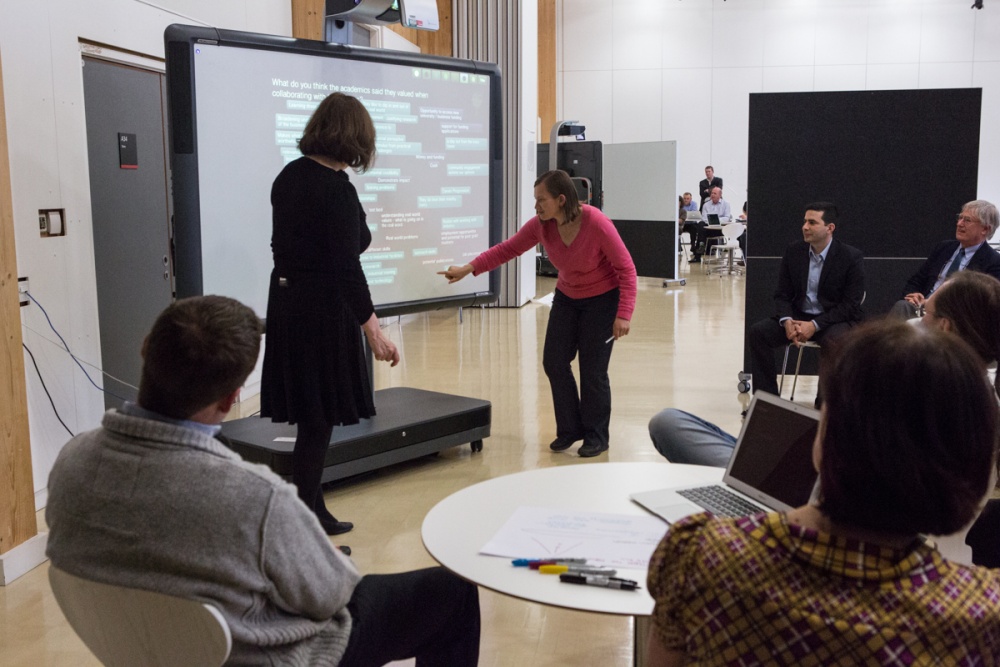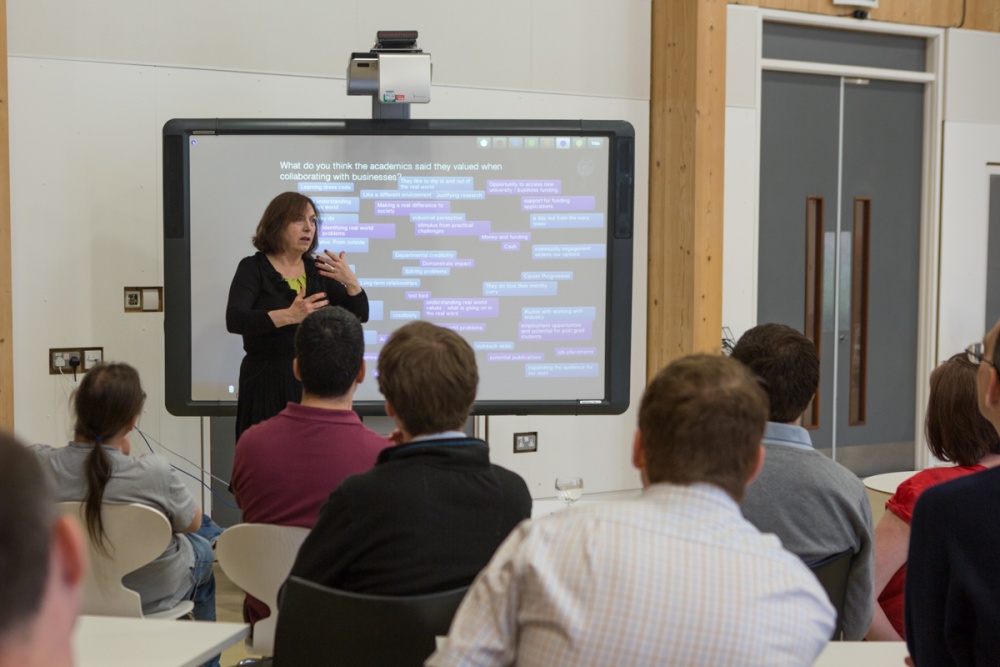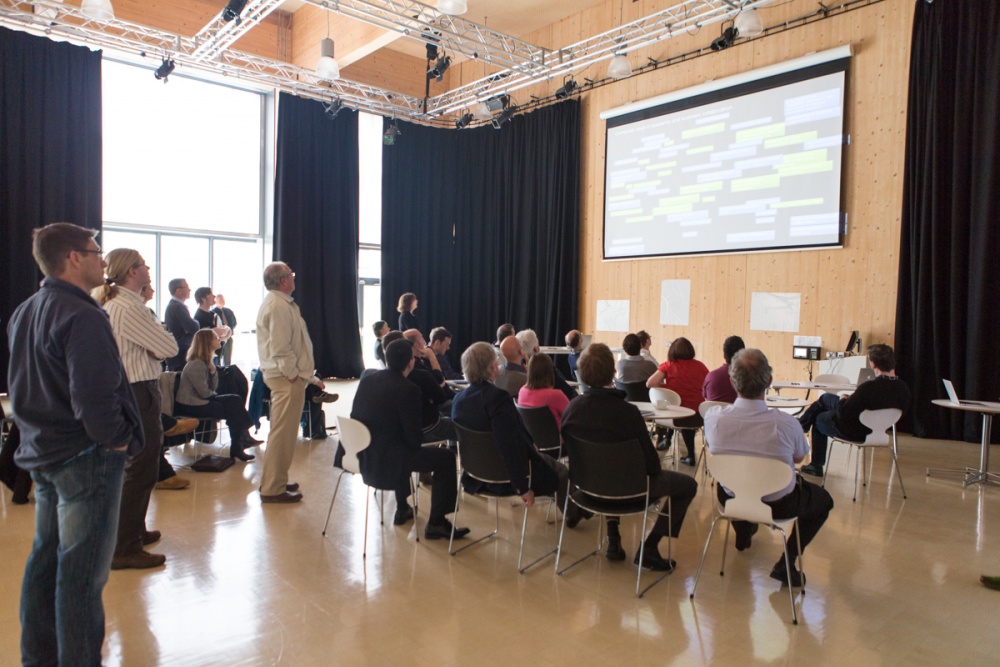The event took place in the LICA building event space and brought together 60 people from both business and academia to spark collaborations and project ideas. The digital tools played an integral role in the event, supporting two groups working independently and then combining the results.
Working with large groups
Approximately 60 people attended the event. This number had doubled from just two days before, resulting in potential resource problems for the facilitation team planning the event. The jump in numbers highlighted a particular advantage of digital tools – scaling up the number of participants only requires more devices. All of the digital tools are work on any web-capable laptop, tablet or phone, all without installing any software or doing any technical configuration.
The size of the group also has an effect on the design of the activities within the event, and on the kind of facilitation required. Dividing up event participants into smaller groups is an effective means to keep everyone involved in a collaborative activity, but in most cases you will want to share the results of the group activity with everyone. The digital tools provide a rapid (instant) means to do this, by producing instant, real-time visualisations of the outputs from multiple groups. In this event, two groups worked independently generating ideas, then the results of the two groups were combined and categorised into themes which were then taken forward further.
Barriers of digital technologies
Compared with physical information technologies (like paper and pens), digital technologies usually place many barriers between the people using them and the information they are working on. Forgotten passwords, wifi connectivity problems and lack of a power socket are some of the barriers many people will recognise from day to day use of computers. Reducing these barriers to using digital technologies is a core part of the work being done by New IDEAS.
At the event we provided our own hardware for participants to use, fully ready for use and designed to be as simple to use as possible. Contributing ideas was just a case of entering words on a keyboard and pressing enter. The removal of so many barriers served to highlight those that remain – keyboards aren’t that easy to use, especially when working without a table; screens are small sometimes making it hard to gather around and collaborate around a single device and text on a computer screen isn’t that rich for communicating ideas.
Fortunately, each of these remaining barriers can be addressed. All devices we use in a session are interconnected, allowing collaborative activities to be spread across multiple devices. We can build up the richness of ideas over a period of time, not just with typed text but with images, video and other forms of media available over the web. Our technology platform also allows people to use their own devices and input methods, reducing the barriers to getting information into the system.
Designing digital collaborative activities
The successes and failures of this event highlight the great opportunities for creating digital tools for co-located collaborative activities. The tools we have created so far only scratch the surface of what can be done, even in the near future. It was great to be able to combine the work of two groups, but the potential for groups to iteratively build on the ideas of each other is far stronger. It was also useful to push a live view of a facilitator’s screen to every screen in the room, but this also shows the potential for collaborative tools which cross between devices.
The role of design in this is to create tools that allow new perspectives and methodologies for collaboratively solving problems and imagining. With good design the technologies in use can be made to disappear, leaving only the questions being answered and the ideas people can develop together.
